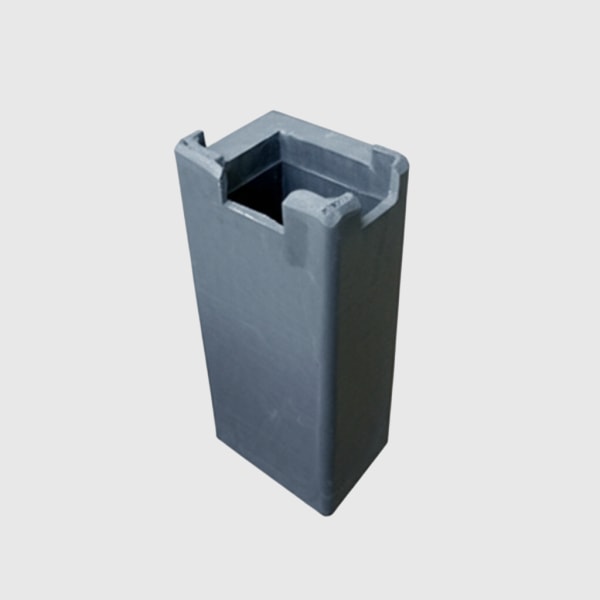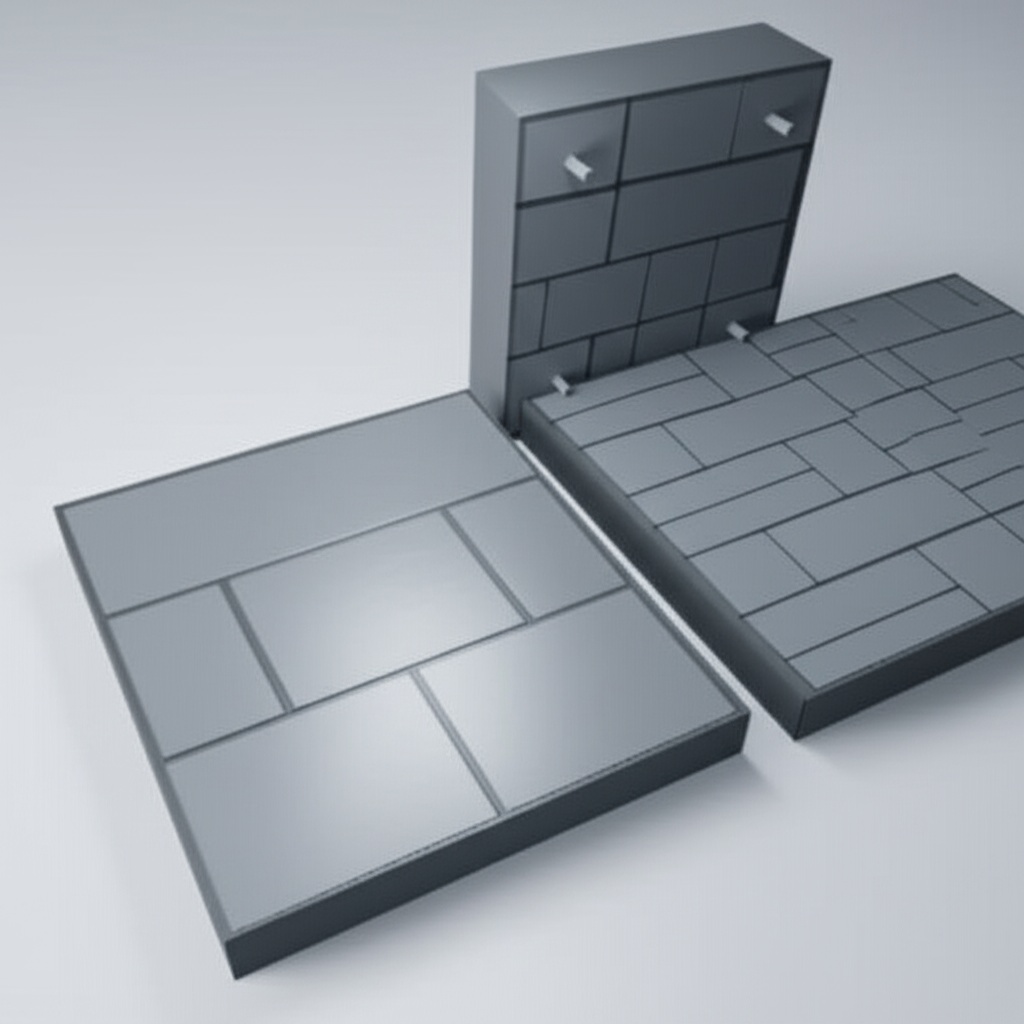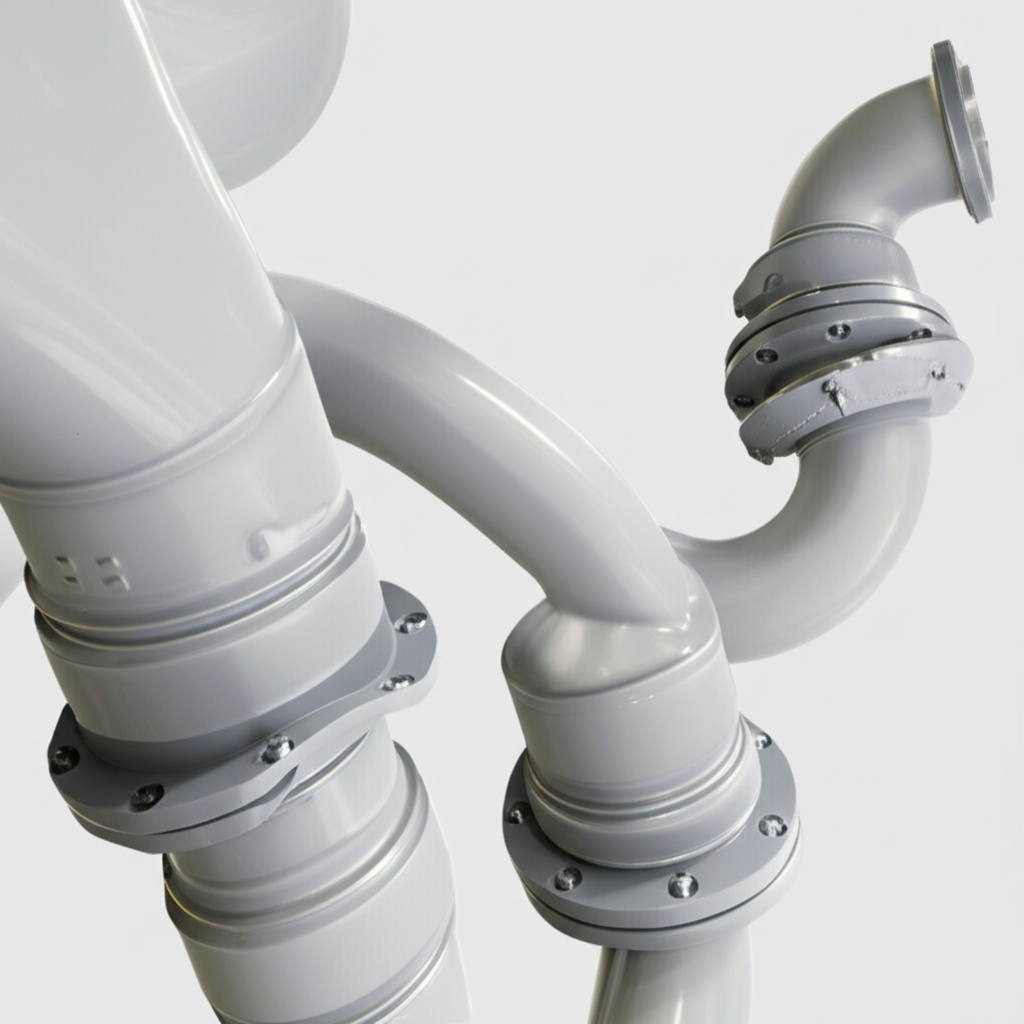175-200℃信頼性認定用炭化ケイ素デバイスバーンインおよび自動テスト装置

シェア
製品概要と2025年の市場関連性
炭化ケイ素(SiC)デバイスのバーンインと自動テスト装置(ATE)は、過酷な条件下で初期不良をスクリーニングし、寿命を検証するために必要な高温、高電圧のストレス環境を提供します。従来のシリコンと比較して、SiCの高い電界強度と高い接合部温度は、特殊なオーブン、パワーストレス治具、パラメトリック測定ユニット、および安全に準拠した自動化を必要とします。サイカーブテックのバーンイン/ATEプラットフォームは、パキスタンの繊維、セメントにおける実際のストレスをシミュレートし、175~200℃でSiC MOSFET、ショットキーダイオード、パワーモジュール、統合パワーステージを認定します、 鉄鋼およびデータ・クリティカル・セクター。
2025年のパキスタンにとって重要な理由
- 施設は最高45℃の周囲温度にさらされ、電圧降下や電圧変動が頻繁に発生する。
- UPS、VFD、PVインバータ、BESSは、OPEXを下げ、計画外の停電を避けるために、予測可能な信頼性を必要とする。
- 現地での資格認定能力を高めることで、リードタイムと輸入依存度を低減し、産業近代化とデジタル経済の迅速な展開をサポートする。
- ESGとエネルギー効率の目標は、厳格なバーンインと自動化された信頼性試験によって証明された、長寿命で高効率のSiCプラットフォームの必要性を高めている。
Sicarb Techは、ターンキーバーンインシステム(HTRB、HTGB、パワーサイクル、ダイナミックスイッチングストレス)、およびデータロギングと分析を備えた自動パラメトリックATEを提供しています。システムはRBSiC/SSiCベースのパッケージングに適応し、ストレス中の現実的な熱経路を確保します。

技術仕様と高度な機能
代表的な能力(デバイスクラスとスループットに応じて設定可能):
- 高温バーンイン(HTRB/HTGB)
- 温度範囲:25~200℃(チャンバーゾーン内で±1℃の均一性)
- HTRB: ドレインバイアス最大1.7kV; リーク電流監視最小nA; ストレス持続時間設定可能 (8-168 h)
- HTGB: ゲートバイアス±30 V、電流コンプライアンス付き; ゲートリーク傾向測定
- スロットごとの自動シャットダウンによるリアルタイムのデルタ・リークと故障基準
- パワーサイクルと動的ストレス
- ΔTj制御: 40-100K/サイクル; 最大10^6サイクル; プログラム可能なドエル時間
- 最大600A/モジュール位置の電流パルス;最大1.2~1.7kVのVDS
- スイッチングストレス:10-100 kHz、設定可能なdv/dt; SOAガードプロファイル
- パラメトリックATE
- SMUベースの特性評価:複数の温度におけるRDS(on)、Vth、ボディダイオードVF/Qrr、リーク対温度
- 最大3 kV / 600 A (パルス)のカーブトレーサー; 精度のためのケルビン固定具
- モジュールレベルのテスト:部分放電(PD)、絶縁(hipot 3-6 kVrms)、動的抵抗、熱インピーダンス(Zth)
- パッケージの互換性
- ディスクリートTO-247/TO-263、ハーフブリッジモジュール、フルブリッジモジュール、カスタムインテリジェントパワーブロック用治具
- RBSiC/SSiCヒートスプレッダ治具による製造熱経路の再現
- データ、安全性、自動化
- トレーサビリティ:デバイスごとのバーコード/RFID、時系列によるスロットごとのデータレイク
- 分析ワイブル/アレニウスモデル、早期故障率(ELFR)、ドリフト解析ダッシュボード
- 安全性:二重インターロック、HV放電、e-stop、アーク検出、絶縁エンクロージャ(IEC 61010)
- 統合:MES/ERP コネクタ(OPC UA/REST)、テストレシピのバージョン管理、監査証跡
適合目標IEC 60749(半導体デバイス信頼性試験)、JEDEC JESD22シリーズ(A104パワーサイクル、A108HTOLなど)、IEC 60068環境試験、PECプラクティスに沿った工場安全性。
バーンイン/ATEが産業信頼性とOPEXにもたらすメリット
| パキスタンの高温、埃っぽい、送電網が不安定な環境におけるフィールドの信頼性確保 | SiCに特化したバーンインとATE(Sicarb Tech) | 一般的な半導体テストセットアップ |
|---|---|---|
| 温度能力と均一性 | 175~200°C、±1°Cゾーンコントロール | ≤150°C; より広い変動幅 |
| 高電圧バイアスおよびリーク・センシング | 最大1.7~3 kV、nA感度 | 低電圧、限られた精度 |
| パワーサイクリングのリアリズム | サーマルパスレプリカで100KまでのΔTj | 基本的なサイクル;熱再現性が低い |
| データ分析とトレーサビリティ | フルデバイスの系譜とワイブルモデリング | 限られたログ、手動レポート |
| 安全性とスループット | 産業用インターロック; マルチラックオートメーション | ラボスケール、スループット低下 |
主な利点と実証済みのメリット
- 初期不良スクリーニング:HTRB/HTGBおよびHTOLプロトコルは、出荷前に乳幼児の死亡率を捕捉し、フィールドRMAとダウンタイムを削減します。
- データによる寿命加速:パワーサイクルとスイッチング・ストレス・マップ・ミッション・プロファイルにより、45℃の周囲温度と埃の多い条件下での正確な寿命予測が可能。
- 市場投入までの時間を短縮:自動化されたレシピと治具がエンジニアリング・サイクルを短縮し、ローカル・テストがパキスタン・プロジェクトの認定リードタイムを短縮します。
- 生産レベルの安全性:HVインターロックとアーク検出により、オペレータの安全性と監査対応プロセスを保証します。
- 実用的な分析:パラメトリックドリフト、リークトレンド、Zthの変化は、パッケージング、アセンブリ、サプライヤロットの是正アクションのトリガーとなります。
専門家の言葉を引用する:
「高温動作寿命と電力サイクルは、ワイドバンドギャップデバイスのフィールド性能の最も信頼できる予測因子であり続ける。- IEEEパワーエレクトロニクス誌、SiCデバイスの信頼性と認定、2024年
実際のアプリケーションと測定可能な成功事例
- ラホールデータセンターUPSプログラム:
- ロールアウトに先立ち、SiCインバーターモジュールに200℃のHTOLとパワーサイクルを導入。
- 結果ELFRを60%削減、UPSルーム効率97.3%、ゲートリーク上昇傾向によりバーンインで2つの潜在的フィールド故障を特定。
- ファイサラバード繊維VFDライン:
- RBSiC治具によるカスタマイズされたΔTj=70 Kサイクル;織機ドライブの代表的な40 kHzでのスイッチングストレス。
- 結果現場でのサーマルトリップが18%減少し、サービス間隔が25%延長。画面後のRDS(on)分布がよりタイトになったため、トルク安定性が向上。
- セメント工場補助駆動装置、パンジャブ州
- 1.3kVのHTRBと、長いケーブル敷設用の部分放電スクリーニング。
- 影響EMIアラームの減少、トランスの発熱事故の減少、ミッション・プロファイル・モデルにおけるモジュール寿命の予測値+22~28%。
【画像プロンプト:詳細な技術説明】 3枚のインフォグラフィック:1) HTRB/HTGBオーブンとリアルタイムのリークグラフ、2) IRサーモグラフィと均一なΔTjを示すパワーサイクリングコールドプレート、3) ワイブルプロット、ELFR、Zth曲線を示すATEコンソールダッシュボード、バイアスレベル、温度設定点、安全インターロックの注釈、フォトリアリスティック、4K。
選択とメンテナンスの考慮事項
- 試験プロファイルの設計
- HTRB/HTGB 電圧をデバイスクラス (650/1200/1700 V) に合わせ、マージンを追加する。
- 電力サイクル:ミッションプロファイル(VFD対UPS対PV/BESS)ごとにΔTjとサイクル数を選択し、量産ハードウェアとの熱パスの等価性を検証する。
- フィクスチャーとサーマルリアリズム
- RBSiC/SSiCバックフィクスチャーを使用し、熱拡散を合わせる。
- TIMの厚みと圧力を現場組立品と一致させる。
- パラメトリック・ガードバンド
- RDS(on)ドリフト、Vthシフト、リーク成長、PDインセプションの許容基準を設定する。
- 安全性と校正
- SMU、HV電源、温度センサーの年1回の校正、インターロックと放電回路の週1回の機能チェック。
- IEC 61010および地域の規制に基づくESDおよびHV PPEトレーニング。
- データガバナンス
- 生のトレースと派生KPIを保存し、ロットとウェハIDにリンクし、レシピとファームウェアの変更管理を実施する。
業界の成功要因と顧客の声
- 成功要因:
- 設計、パッケージング、信頼性エンジニアリングの早期連携によるストレスレシピの定義
- 最終用途のエンクロージャーとの熱相関(エアフロー、ダストフィルター、正圧)
- 分析からサプライヤーや組立工程に戻る継続的な改善ループ
- 季節的な周囲の影響(夏の暑さのピーク)を検証するための地元のパイロットライン
- 証言(カラチ鉄鋼サービスセンター、メンテナンス責任者):
- 「バーンインにより、試運転前に限界部品が特定されました。当社のドライブは一貫した熱挙動を示すようになり、保護トリップの回数も減りました。
将来のイノベーションと市場トレンド
- 2025~2027年の見通し:
- 故障の前兆にフラグを立てるため、AIが漏水と動的抵抗の異常検知を支援
- 現実的なMVドライブストレスを可能にする両面冷却モジュールフィクスチャー
- 結晶成長からフィールド性能分析までの200 mm SiCウェハートレーサビリティ
- 大型工場やプラントにおけるロングケーブル・アプリケーションのための自動部分放電マッピング
業界の視点:
「SiCの採用を拡大するには、加速試験とフィールド分析のループを閉じることが重要です。- IEA技術展望2024、パワーエレクトロニクスの章
よくある質問と専門家による回答
- 産業用配備の場合、バーンインはどれくらいの期間必要ですか?
- ELFRのターゲットとミッション・プロファイルに基づいて調整する。
- 高温テストは良い部品を損傷させるリスクがあるのか?
- テストはSOA内でマージンを管理し、受入基準とソフト・ランピングで健全なデバイスを保護する一方で、脆弱なデバイスを露出させる。
- ディスクリートだけでなく、完全に組み立てられたパワーモジュールもテストできますか?
- はい。モジュール・レベルのHTOL、絶縁/ヒポット、PDテスト、Zth測定、現実的な冷却による動的スイッチング・ストレスをサポートしています。
- 結果はQA/MESとどのように統合されるのか?
- OPC UA/REST API経由。各ユニットの系譜、パラメータ、合否ログは、監査とトレーサビリティのためにMESにプッシュされます。
- パキスタンの工場は地元の資格にどのようなROIを期待できるのか?
- 現場での故障の減少、現場訪問の減少、試運転の迅速化、エネルギー性能の安定性向上により、通常12~24ヶ月で投資回収が可能。
このソリューションがお客様の業務に役立つ理由
Sicarb TechのSiCバーンインと自動化テストプラットフォームは、パキスタンの高温、埃っぽい、グリッド揮発性の環境で使用される温度と電圧でデバイスを認証します。現実的なサーマルフィクスチャー、厳格な安全性、分析豊富なATEを組み合わせることで、VFD、UPS、PV、BESSの初期不良を削減し、寿命を延ばし、効率を安定させ、OPEXの削減と可用性の向上を実現します。
カスタムソリューションについては専門家にご相談ください
シカーブ・テックで信頼性パイプラインを強化しましょう:
- 中国科学院の支援による10年以上のSiC製造専門知識
- R-SiC、SSiC、RBSiC、SiSiCにわたるカスタム開発、さらに複雑なパッケージのための専用バーンイン治具
- パキスタンにおける資格認定能力を現地化するための技術移転および工場設立サービス
- 材料加工から試験済みの認定製品まで、コンプライアンス文書とともにターンキーで提供
- 19社以上の企業との実績;迅速なパイロットセットアップとレシピの最適化
175-200℃の認定計画、サンプルサイズ、ROIモデルを定義するための無料コンサルテーションをご予約ください。
- Eメール:[email protected]
- 電話/WhatsApp:+86 133 6536 0038
2025年第4四半期のバーンイン容量を今すぐ予約し、ピーク時の試運転サイクルの優先キューを確保する。
記事のメタデータ
- 最終更新日:2025年9月11日
- 次回のレビュー:2025-12-15
- 著者シカーブテック信頼性エンジニアリングチーム
- Contact: [email protected] | +86 133 6536 0038
- 規格の焦点:JEDEC JESD22 (A104、A108)、IEC 60749、IEC 60068、IEC 61010; PECプラクティスおよびNTDCグリッドコード品質基準に準拠。

About the Author: Sicarb Tech
We provide clear and reliable insights into silicon carbide materials, component manufacturing, application technologies, and global market trends. Our content reflects industry expertise, practical experience, and a commitment to helping readers understand the evolving SiC landscape.



